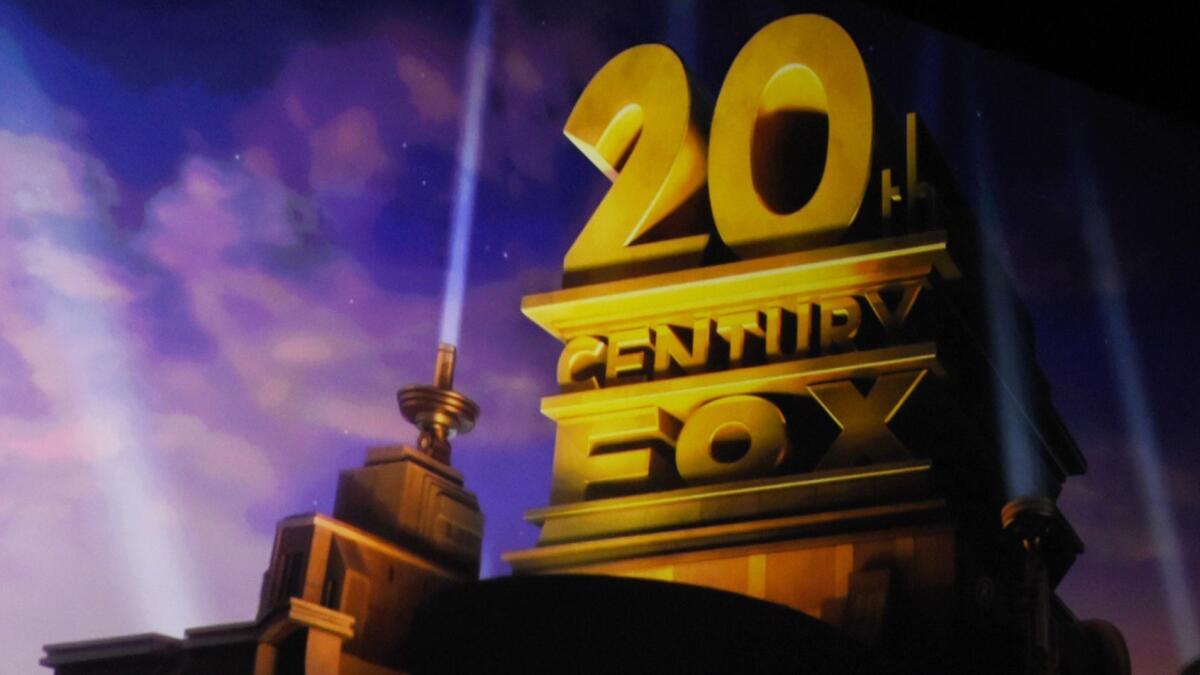‘Solo’ hits the big screen minus one classic ‘Star Wars’ moment: the Fox Fanfare

When “Solo” blasts into theaters Friday, audiences will hear Chewbacca’s trademark growl, the not-always-reliable engine of the Millennium Falcon and even the music of John Williams, who composed new themes for the latest episode in the expanding “Star Wars” universe.
What they won’t hear is a piece of music that heralded all the early “Star Wars” movies: the 20th Century Fox Fanfare.
Written by Alfred Newman, a founding father of film music, the Fanfare may be the only studio “logo” music that most moviegoers know by heart.
Under the image of the Fox monolith, illuminated by roving searchlights, a martial battery of snares and bass drum percussion introduces Newman’s brassy, regal fanfare.
“It sounds like a medieval castle, trumpets on the rampart,” said David Newman, the composer’s son and an Oscar-nominated composer himself. “You know, ‘Come to the movies!’ ”
Alfred Newman wrote the fanfare in 1933. He was still under contract at United Artists when he got the commission from Darryl F. Zanuck, who needed a logo for his newly formed 20th Century Pictures.
Zanuck’s studio bought Fox Film Corp. in 1935 and became 20th Century Fox, and he hired Newman as head of the music department in 1940 — a post Newman held for 20 years. In 1954, Newman extended the fanfare with warm, soaring strings for the studio’s new CinemaScope presentation, and that version remained through every visual iteration of the logo up to its modern-day computer animation.
Newman’s trumpet call preceded nearly every Fox feature over the decades, from “How Green Was My Valley” in 1941 to “MASH” in 1970, becoming an earworm symbol of both the studio and the composer’s integral connection to it.
The fanfare gradually began to fade, but it came roaring back to life in 1977. George Lucas insisted on using the throwback logo at the top of his throwback space serial, and Williams — who started out playing piano on several of Newman’s scores at Fox and who counted the composer as a mentor and friend — wrote his famous “Star Wars” fanfare in the same key of B-flat major to emerge seamlessly out of the Newman piece. In every subsequent “Star Wars” film, Williams treated the Fox logo as the opening of his score.
The logo became inseparable from “Star Wars,” and its catchy call-to-arms triggered a Pavlovian drool in filmgoers waiting in the pregnant pause before the giant golden title slammed onto the screen.
David Newman, who has become the premier conductor of live-to-picture concerts and led the New York Philharmonic through the scores of “Star Wars” during screenings last year, noticed that “as soon as that logo started, people started screaming. I mean, how many years later is that? It’s getting close to a hundred years later.”
To offset debt in the 1980s, Fox sold much of its publishing catalogue to Warner/Chappell Music — something Robert Kraft, who became head of music in 1994, could not believe.
“The polite version of this is: You must be kidding,” said Kraft, who held the job until 2012. “I mean, somebody said, ‘I’ll take your house, and by the way, the kid comes with it.’ ”
Kraft negotiated a deal to get the rights back, and the logo became one of the studio’s most precious assets. He turned down dozens of requests from directors and composers to monkey with the music in any way, making a rare few exceptions — like “The Simpsons Movie,” in which Ralph Wiggum steps out of the monolith and sings along off-key.
The Walt Disney Co. bought Lucasfilm — and, thus, “Star Wars” — from George Lucas in 2012, and when the first new entry in the Skywalker saga debuted under Disney proprietorship in 2015 (“The Force Awakens”), the Fox logo was notably absent. Since then, each new film has gone without the logo. Disney even scrubbed it from new digital releases of all of the older films except for the 1977 original (the only one Fox ever owned).
In December, when Disney announced it was acquiring the parent company, 21st Century Fox, it gave many “Star Wars” fans a new hope: Could this mean the Return of the Logo?
The studio declined to comment at the time (and did not respond to requests for comment for this article), but there had been precedent. When Disney acquired Pixar, the computer animation company’s logo (with its bouncing lamp) stayed on as a kind of sub-brand. Likewise with Marvel Studios when it too was swallowed by Disney. (That logo has its own fanfare, composed by Michael Giacchino.)
Of course, the studio could flush all nods to its former competitor — the most dire scenario being a revisionist history where the logo is ripped from every Fox film past.
“I guess like anything, all good things must pass,” said Alfred Newman’s other famous composer son, Thomas Newman. “Things have their time and place. I don’t know that I would be sad about it, so much as I would remark that time is passing, and that with it, this music.”
When pressed further, particularly about his family’s history with Fox — including the legendary recording stage that was renamed the Newman Scoring Stage in 1998 — the “American Beauty” composer grew more wistful.
The logo “represents a golden age of what it was to write music for movies,” he said. “And when I go down to the Fox stage and record now, there’s a real sense of history I get there — mostly when no one’s in the room. You just kind of feel the ghosts, and so much happened in that space. I think, on that level, that association might go away, sadly, for me.”
David Newman is blunter still: “It’s a shame that Disney’s so small-minded to not honor that,” he said, speculating that the logo might fade out forever. “I just don’t understand the thinking.”
See all of our latest arts news and reviews at latimes.com/arts.
ALSO
The review: Justin Chang on ‘Solo’
‘Solo Must Die,’ and so must this ‘Star Wars’ musical spoof
While you’re ‘Singin’ in the Rain’ at the Hollywood Bowl, he’s keeping the musicians in sync
More to Read
The biggest entertainment stories
Get our big stories about Hollywood, film, television, music, arts, culture and more right in your inbox as soon as they publish.
You may occasionally receive promotional content from the Los Angeles Times.






